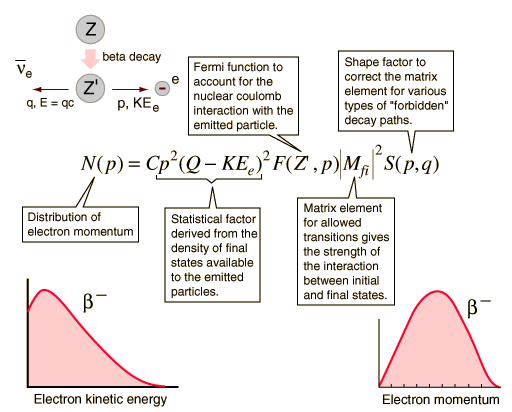Fermi Theory of Beta Decay
In 1930, Wolfgang Pauli postulated the existence of the neutrino to explain the continuous distribution of energy of the electrons emitted in beta decay. Only with the emission of a third particle could momentum and energy be conserved. By 1934, Enrico Fermi had developed a theory of beta decay to include the neutrino, presumed to be massless as well as chargeless.
Treating the beta decay as a transition that depended upon the strength of coupling between the initial and final states, Fermi developed a relationship which is now referred to as Fermi's Golden Rule:

Straightforward in concept, Fermi's Golden Rule says that the transition rate is proportional to the strength of the coupling between the initial and final states factored by the density of final states available to the system. But the nature of the interaction which led to beta decay was unknown in Fermi's time (the weak interaction). It took some 20 years of work (Krane) to work out a detailed model which fit the observations. The nature of that model in terms of the distribution of electron momentum p is summarized in the relationship below.

Beta decay concepts
Krane
Int. Nuclear Physics, Ch. 9
| HyperPhysics***** Quantum Physics ***** Nuclear Physics | R Nave |